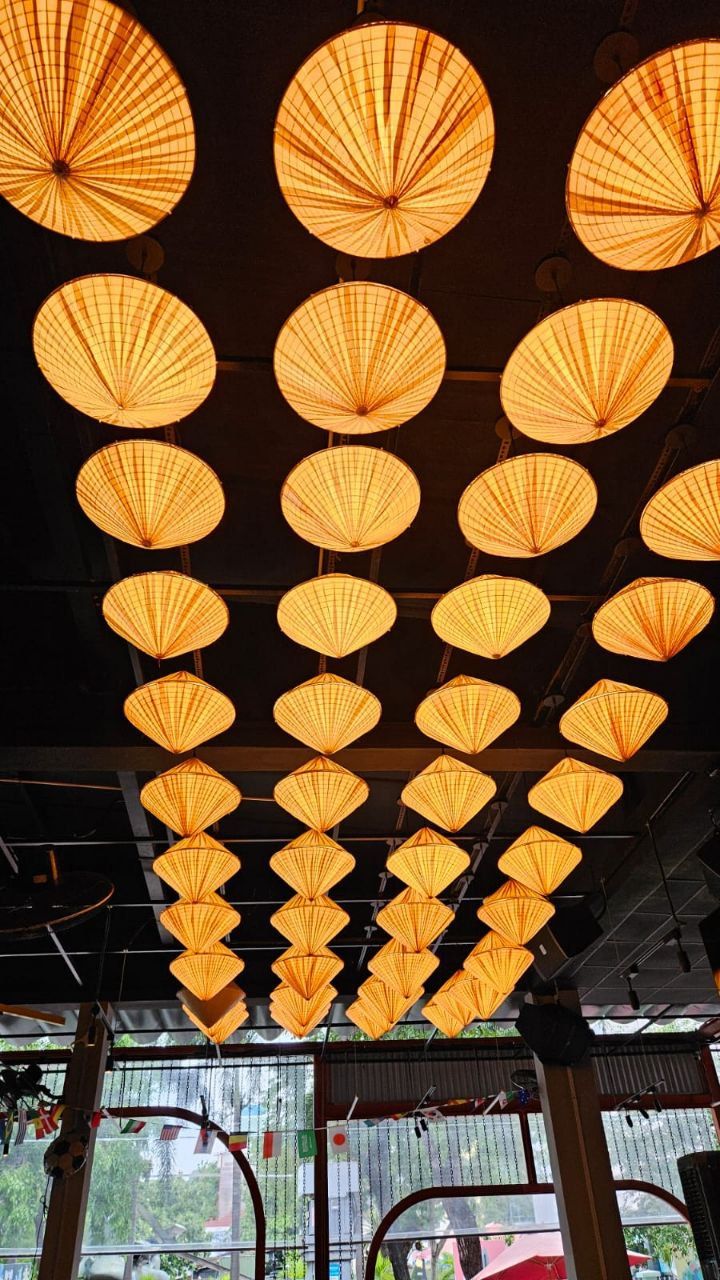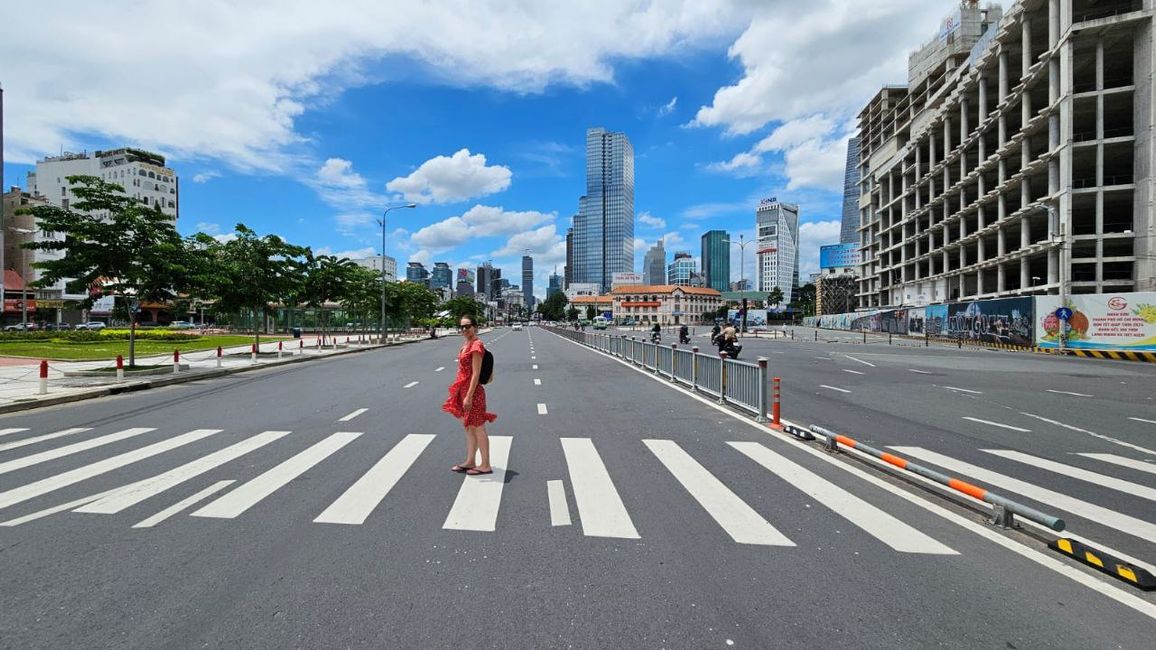
clara-marie-in-der-praerie
vakantio.de/clara-marie-in-der-praerie
Pulau Papan and the Jellyfish Lake
Ebimisami: 15.10.2024
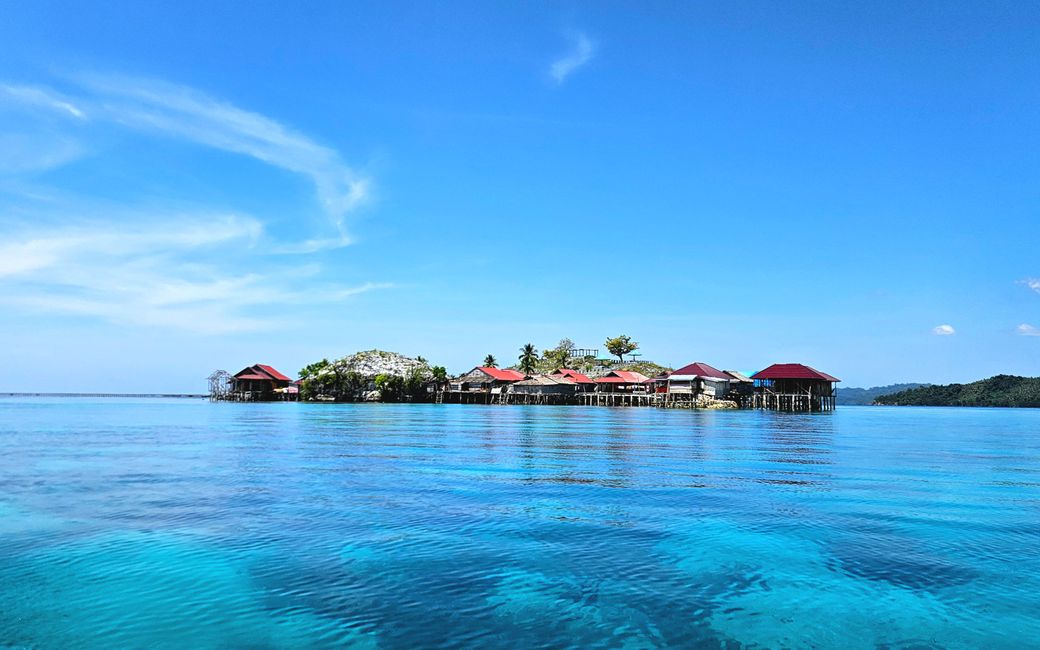

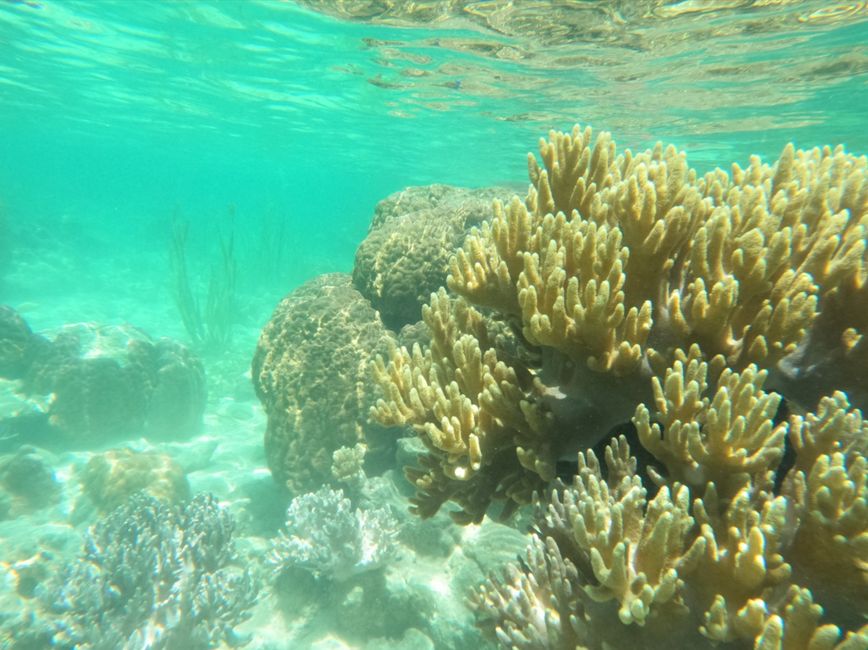

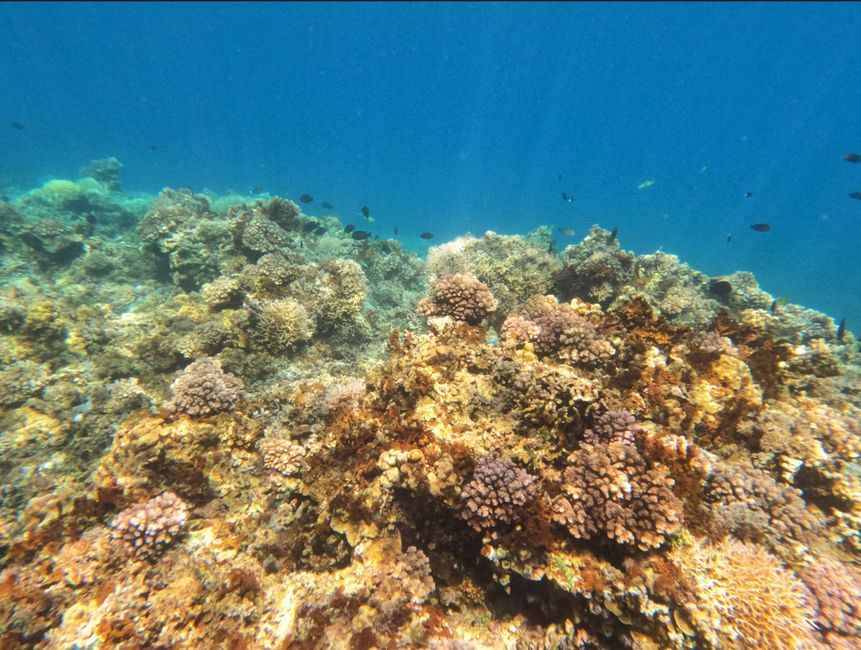
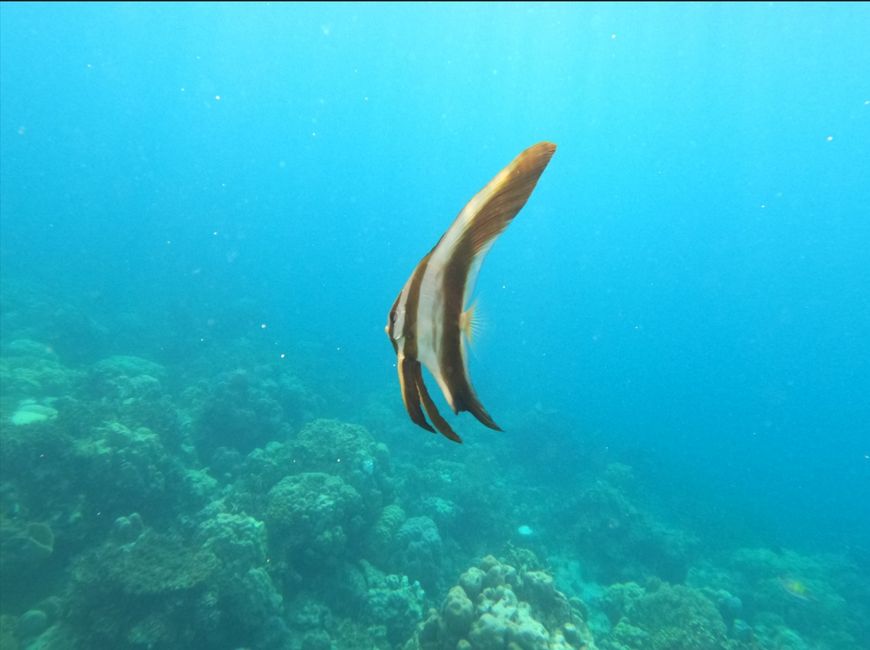
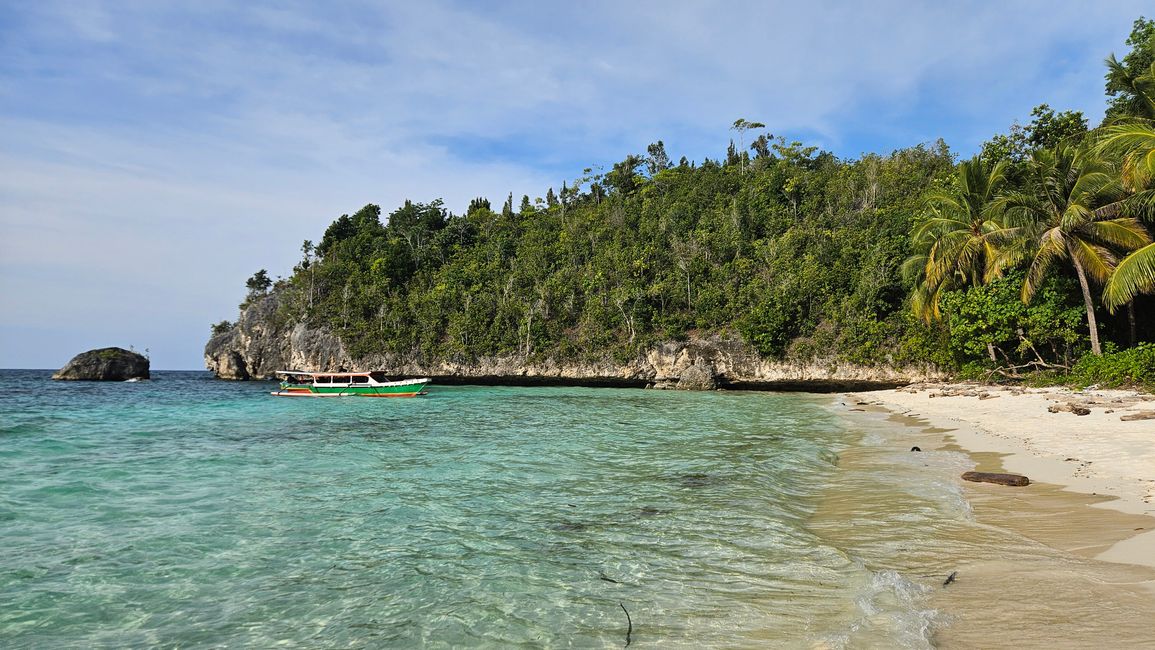
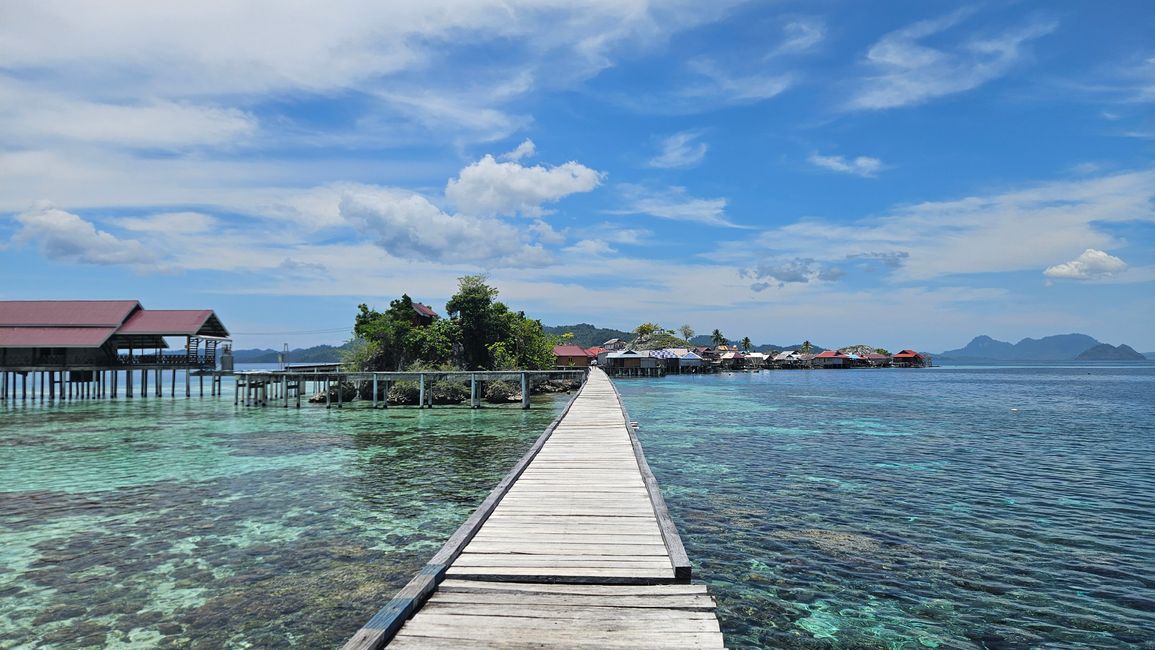
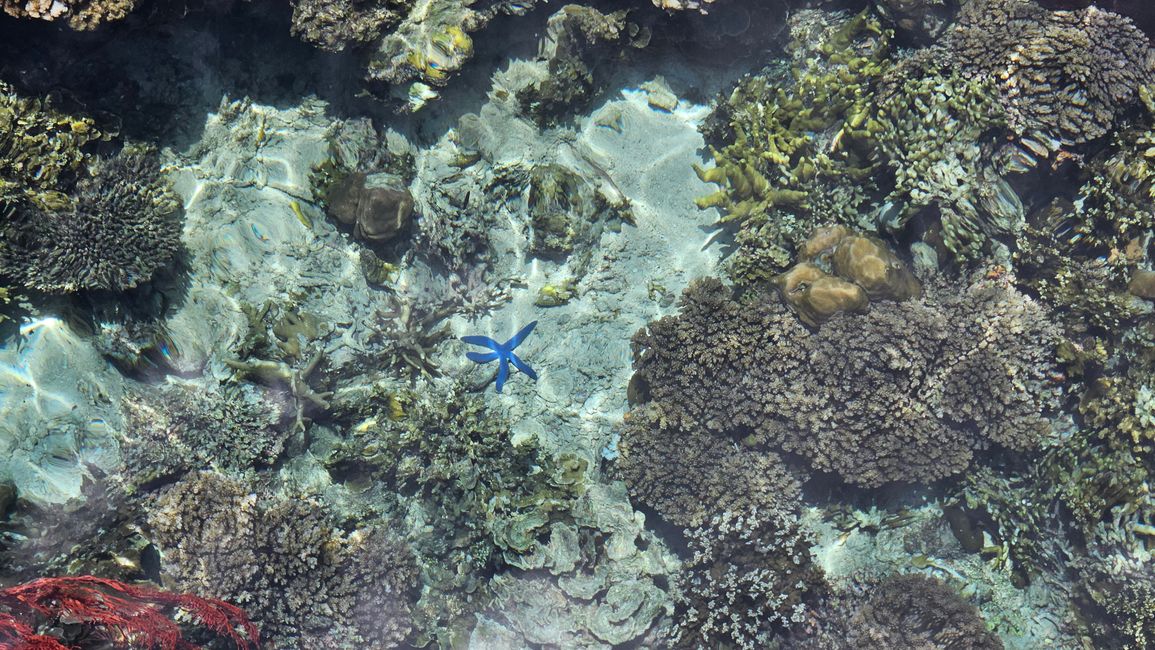

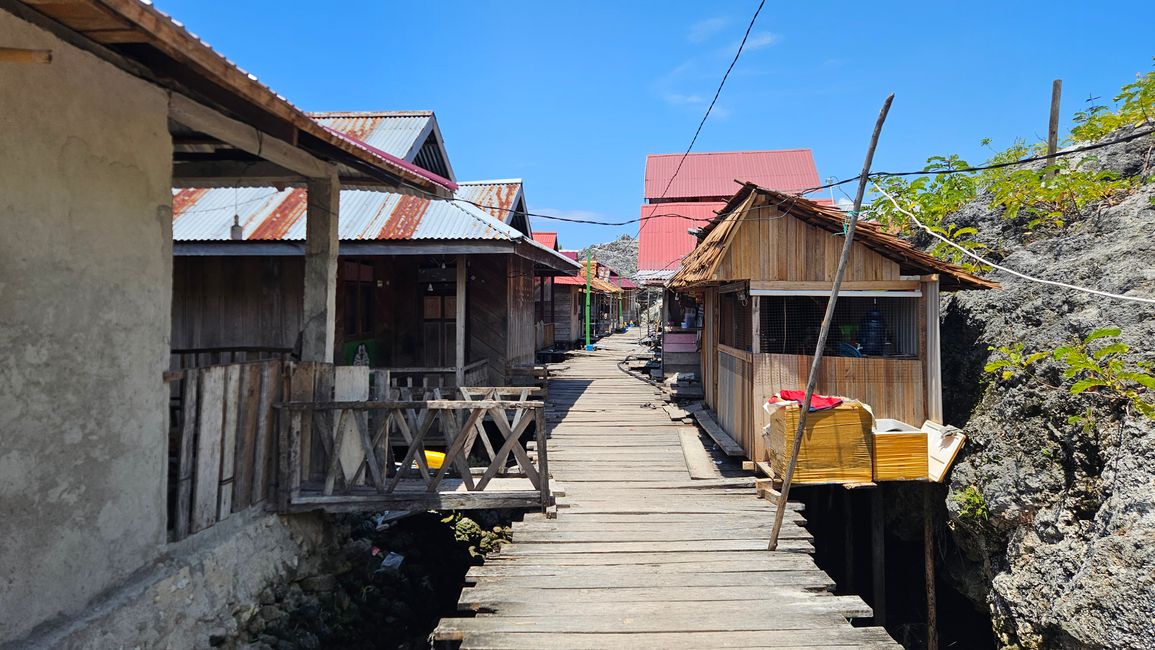
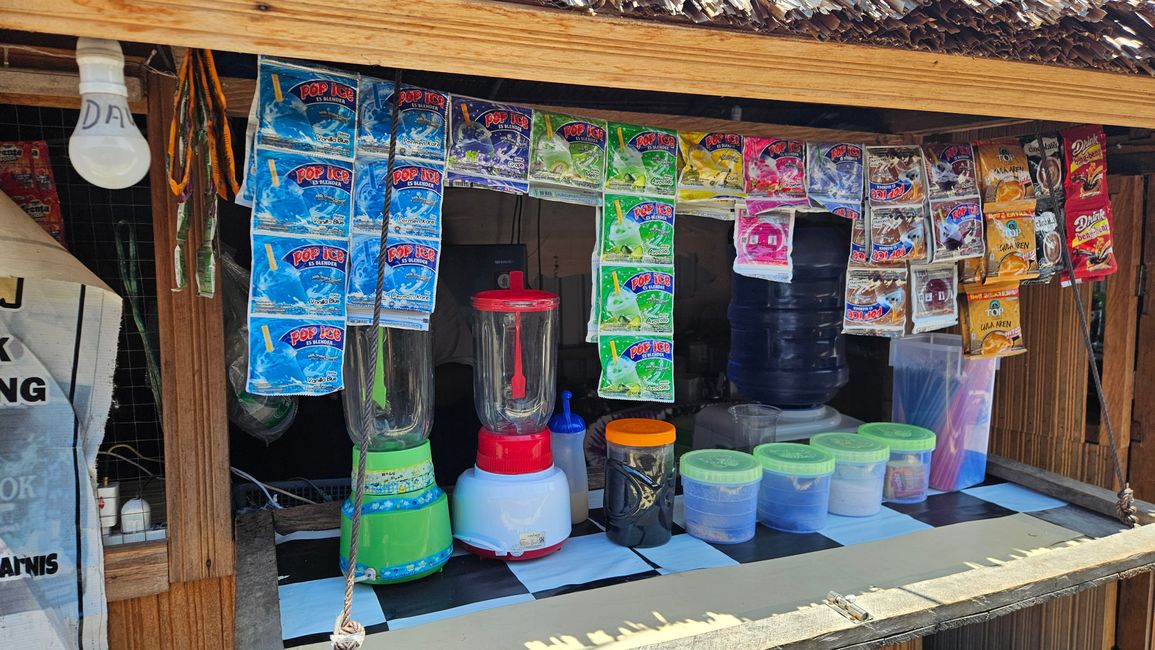
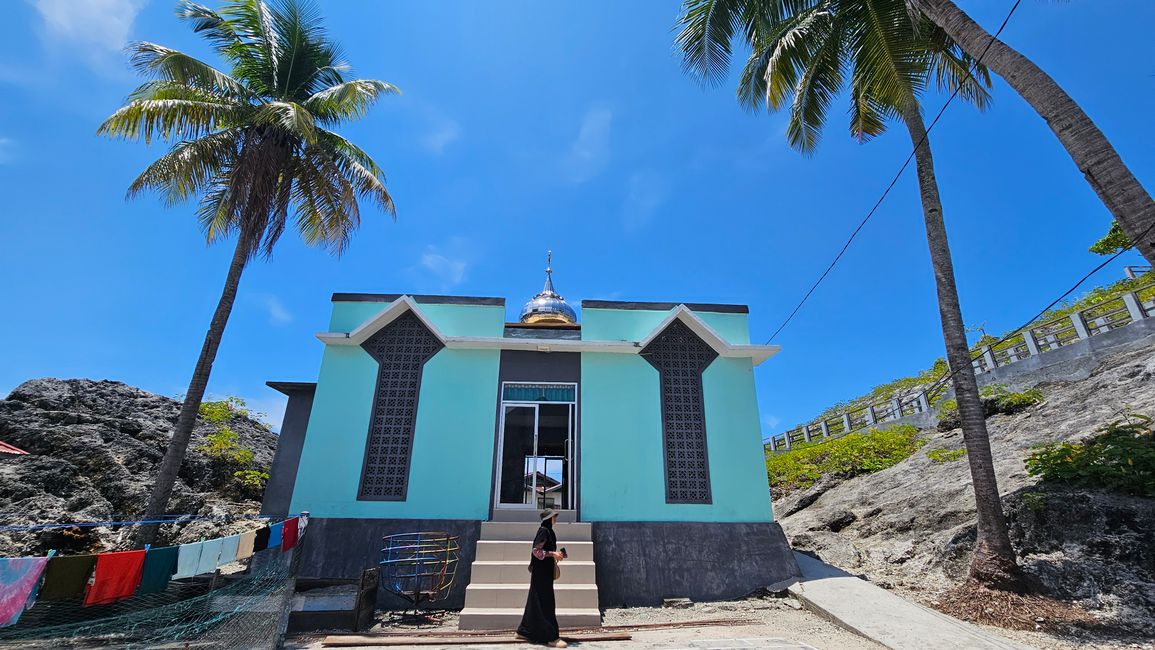
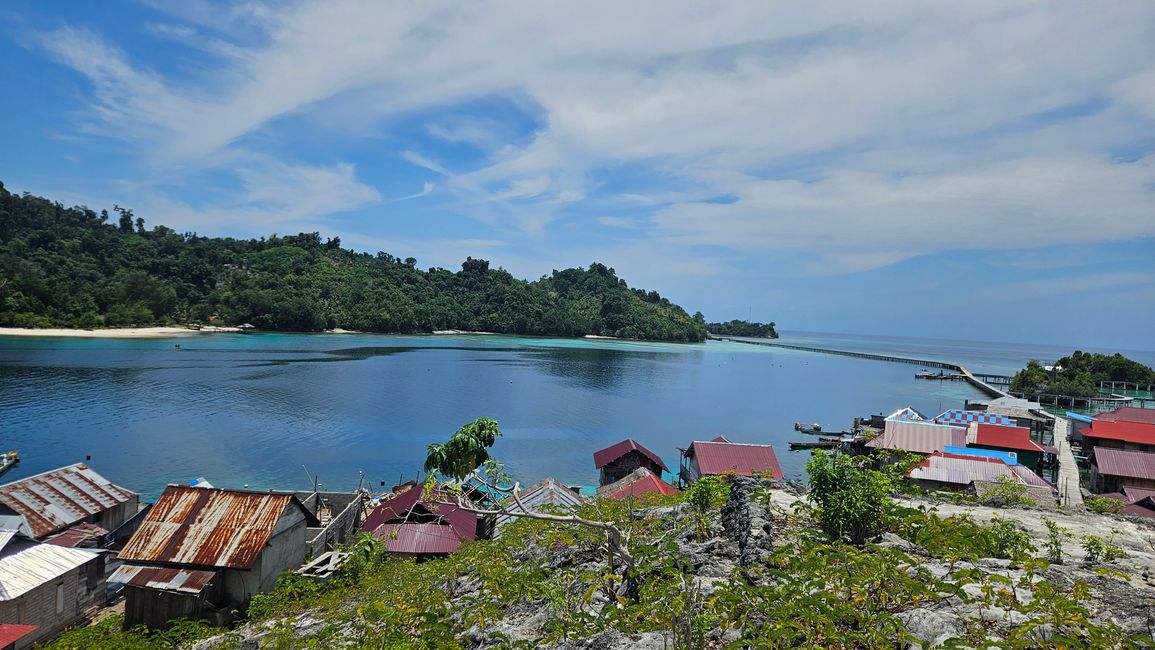
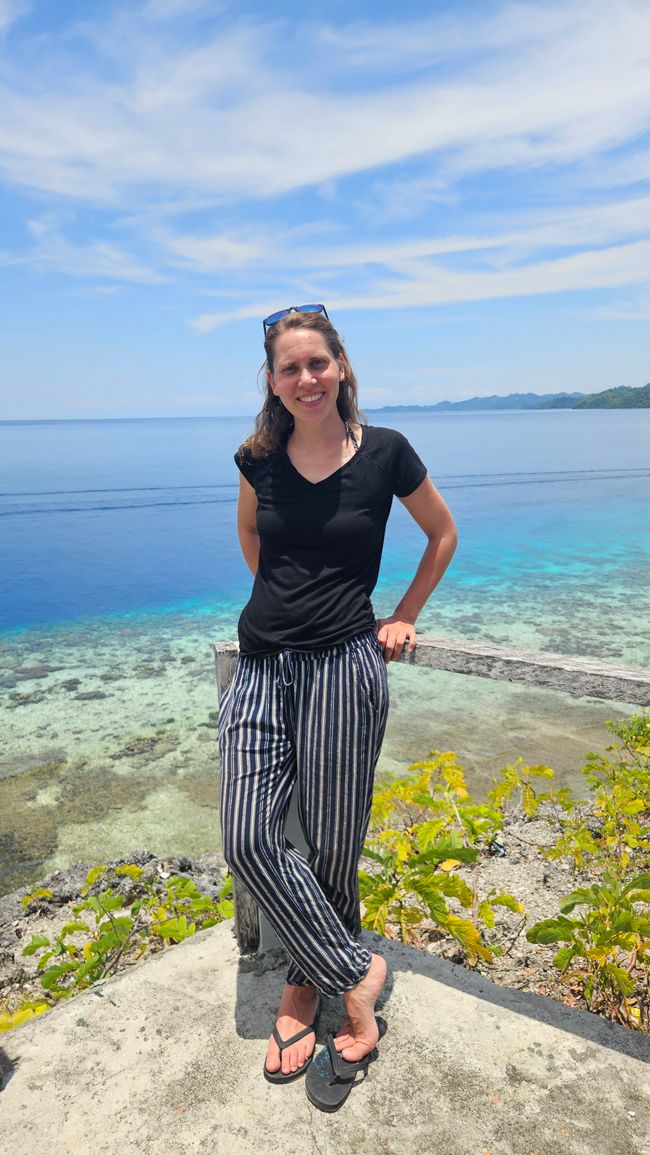
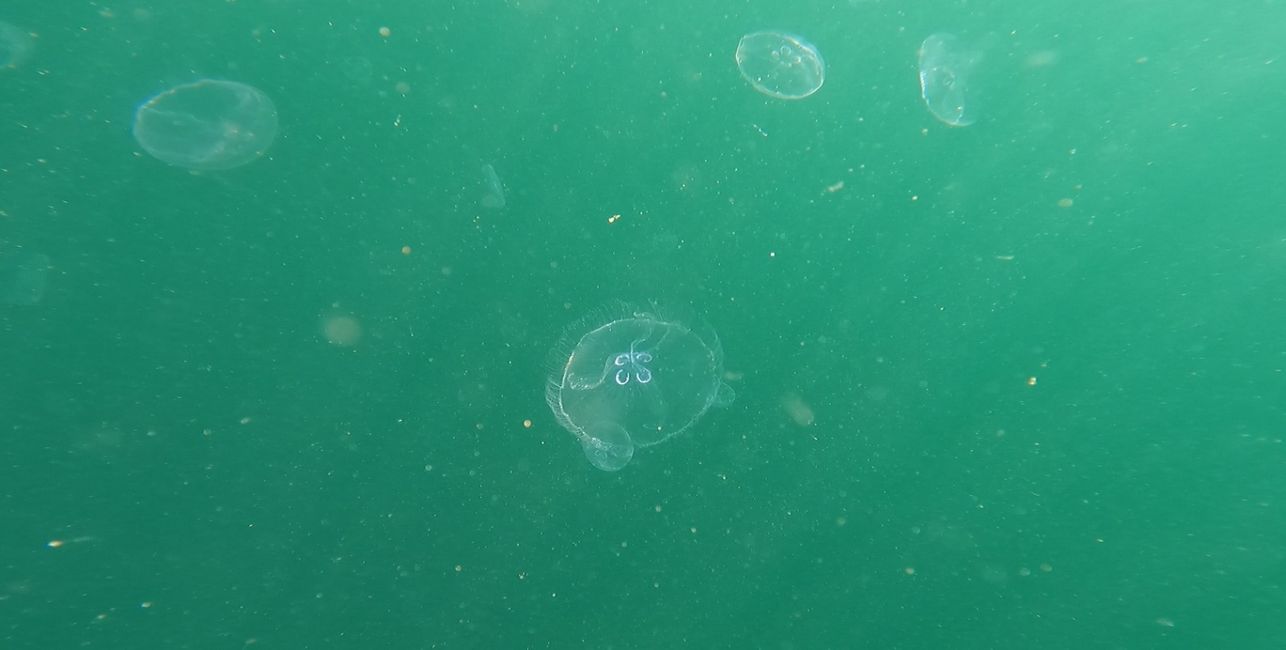
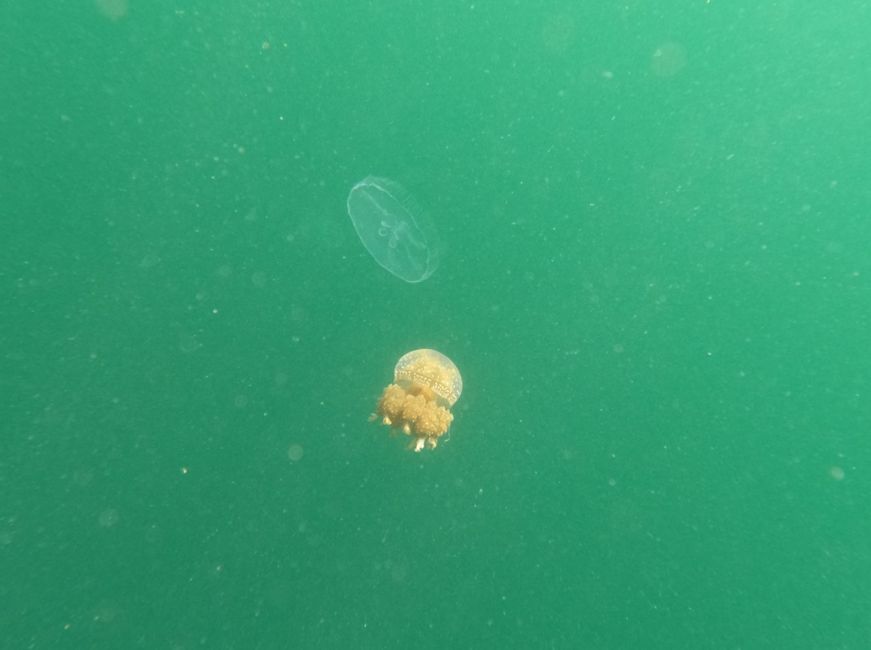
During the second day trip with Waldemar, Ali, and Fifi, the itinerary included two snorkeling spots: Pulau Papan and the Jellyfish Lake. Snorkeling spot number 1 was a coral reef that looked truly amazing. There were an incredible amount of soft and hard corals, many fish, and visibility was around 30 meters. The hour we spent snorkeling there flew by.
Snorkeling spot number 2 - Karina Beach - unfortunately wasn't quite as beautiful. From a distance, it looked like a really picturesque beach, but the closer we got by boat, the more trash I noticed in the bushes. Sadly, you first have to swim quite a distance from the beach before you leave the trash in the water behind. But that is indeed a major problem (or one of several): a huge amount of trash gets washed ashore every day, and if the beach section doesn’t belong to any accommodation, it won’t be cleaned up (multiple times) daily.
Pulau Papan is one of many villages of the Bajau people. They are an indigenous ethnicity in Southeast Asia and are generally considered sea nomads due to their traditional way of life in boats. The number of Bajau born at sea and living there is steadily declining. For most of their history, they have supported themselves through trade and fishing. It has certainly been beneficial for them that, genetically, they can hold their breath longer and can even see better underwater.
The houses of Pulau Papan village are partially built on stilts in the water and partially on the small island of Papan off Malenge. The view of several other islands and the crystal-clear water is picturesque. When walking from the dock into the village, you see coral, fish, starfish on both sides... Truly paradise-like! Unfortunately, trash has now also started to accumulate around the stilt houses in the water, and there the water is rather black.
For several years now, Pulau Papan has had a approximately 1km long jetty connecting the place to Malenge Island. The Bajau children can independently walk to school and back home via this jetty. Otherwise, you can also tell that the place has now adapted to visitors: there are several small shops, and the children ask for school supplies. But that is definitely better than most other Indonesian children, who shamelessly shouted 'Give me money!' at me.
The Jellyfish Lake on Pulau Katupat is a natural saltwater lake that was separated from the sea thousands of years ago due to a volcanic eruption or landslide. Some jellyfish were also cut off from the sea, and since they had no natural predators anymore, they no longer needed their stingers. Over time, these have regressed to the point that they no longer sting when touched. So you can swim in the lake with them without worries.
I honestly had not set very high expectations for the Jellyfish Lake. On one hand, the Google images are not as spectacular as the guidebook describes the lake. On the other hand, some people had already told me beforehand that you hardly see any jellyfish.
Perhaps due to my low expectations, I was so amazed when I jumped into the lake. Jellyfish were everywhere, and sometimes a larger jellyfish swam past me. I had never seen so many jellyfish in one place, and although I inadvertently touched some, the familiar stinging sensation didn’t occur. Incredible!
Eyano
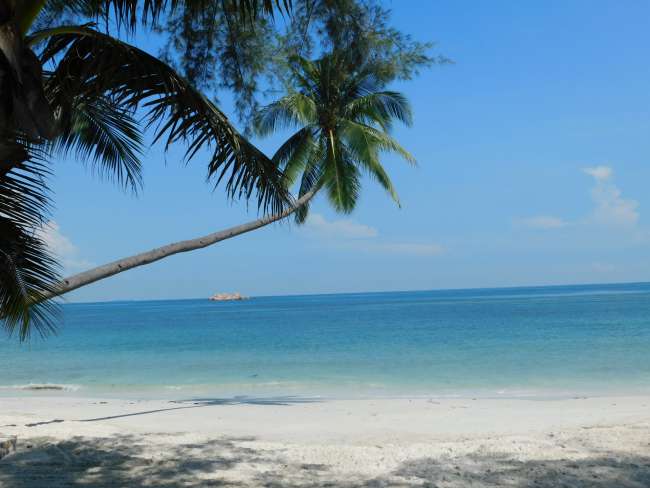
Lapolo ya mobembo Indonésie
